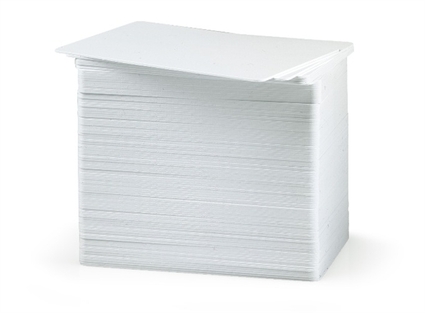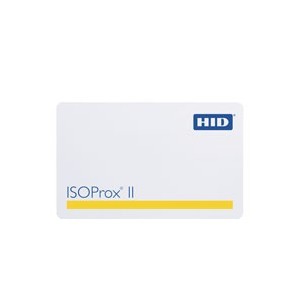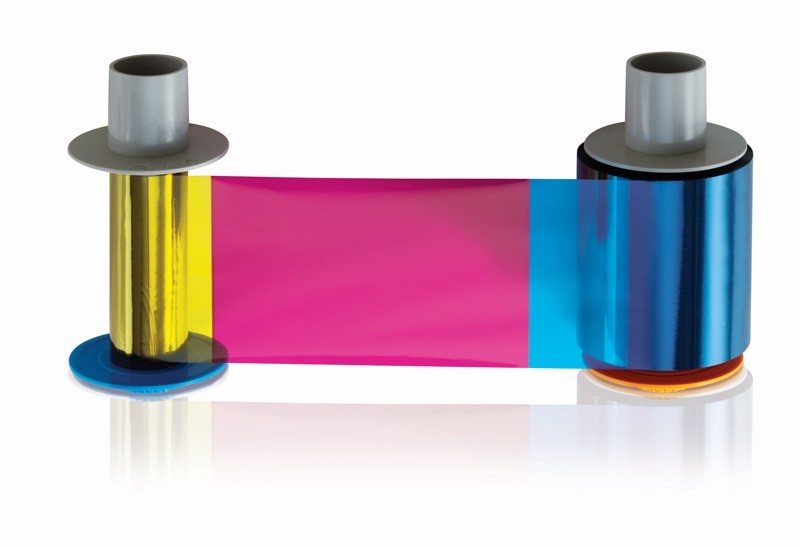 Loading... Please wait...
Loading... Please wait...- Home
- ID Knowledge Center
- Glossary
ID Knowledge Center
Shop by Product
Shop by Brand
Industries We Serve
Glossary
Glossary
Glossary/Definition of Terms
Access Control: The use of cards or fobs with an internal antenna and/or chip to provide either physical access to a location controlled by a door reader, a computer or workstation controlled by a smart card reader (logical access), or both.
Biometrics: The use of a feature unique to an individual for access control or authentication purposes. Biometric features may include fingerprints, voice recognition, retina scanning, iris features, hand feature measurements, and spectrometer measurements of skin. These readings can be stored and encrypted onto a smart card, then matched against live readings once inserted into a biometric scanner. Matching results will authenticate while conflicting results will not.
Coercivity: A measurement value in Oersteds (Oe) of how strong a magnetic field must be in order to alter data encoded on a magnetic stripe or other storage medium. With ID cards, the two options are general High Coercivity (greater than 2750 Oe), and Low Coercivity (around 300 Oe).
Color printing: Since PVC cards are generally white, the color printing process is accomplished by implementing subtractive color using three different panels: Yellow, Magenta, and Cyan, otherwise referred to as YMC or the CMYK model. Each panel prints on the card in turn using dye sublimation to produce the required colors. Ribbons for printing in color can come in YMC, YMCK, YMCKO, YMCKOK, and YMCKOKO varieties depending on the make and model of your printer.
Composite Card: A card that consists of a core material (generally polyester) between two surface layers of photo-grade PVC. This composition is  more durable than a 100% PVC card and is recommended when using laminating printers, retransfer printers, or when a card is deployed in a high-usage area. The composition of the card is generally 40% polyester/PET and 60% PVC, but some manufacturers use slightly different ratios of material.
more durable than a 100% PVC card and is recommended when using laminating printers, retransfer printers, or when a card is deployed in a high-usage area. The composition of the card is generally 40% polyester/PET and 60% PVC, but some manufacturers use slightly different ratios of material.
Contact Card/Contact Smart Card/Contact Chip: A smart card that has an embedded and surface-exposed circuit chip that stores information on internal memory. These cards must be physically inserted into a reader that contains pins that make contact with the surface of the chip and reads or writes information to the card. This chip does not transmit anything wirelessly.
Contactless Card/Contactless Smart Card/Contactless Chip: A smart card that contains an embedded chip connected to an antenna beneath the surface of the card that communicates via RFID. These cards communicate wirelessly with a card reader. Proximity cards, iClass ® cards, MIFARE ®, DESFIRE ®, and UHF are all various types of contactless cards, though the common definition generally refers to mid-range iClass, DESFIRE ®, and MIFARE ® cards.
CR79: A card size designed to fit inside a molded void on clamshell-style proximity cards. The dimensions are 3.303” x 2.051” or 83.9mm x 51mm. This card size is still fairly common.
CR80: A standardized card size that is the same as most issued credit cards or bank cards. This is by far the most common size of plastic card, and is 3.375” x 2.125” or 85.6mm x 54mm
CR90: Sometimes referred to as “driver’s license size,” this card is slightly larger than the CR80 and is no longer common and few machines are capable of printing to them. Dimensions for this card are 3.63” x 2.37” or 92 mm x 60mm.
CR100: Often listed as government, military, or oversize, the CR100 card was popular for quite some time as its greater size allowed for easier identification at a distance. Most CR-100 capable machines are no longer in production. Dimensions for the CR100 card size are 3.88” x 2.63” or 98.5mm x 67mm.
Direct-to-Card (or DTC): The use of a dye sublimation printing process to print color directly to an appropriate PVC surface.
Dye Sublimation: A printing process that involves the thermal printhead vaporizing dyes carried on YMC ribbons and diffusing them into the surface of the card. Various levels of color saturation are achieved by varying the intensity of each tiny thermal element on the printhead. By using this process with a YMC ribbon, full-color images can be printed onto plastic cards.
E-card Encoder: An encoder within a card printer than can print to a specific combination of smart cards depending on the model. Technologies include contact smart cards, MIFARE ®, and proximity cards.
Edge-to-Edge: The maximum printable area on a card. Depending on the capabilities of the model, direct-to-card printers can print quite close to the physical edge of the card, providing a clean print with little to no white border area.
Emedded Badging Application: A program such as Swift ID™ from HID®, which is a badging application stored on the printer’s mainboard. This allows for the creation of basic cards without the need to purpose additional badging software.
Encoding option: An element of the printer that electronically transmits and encodes information to an appropriately equipped card using either magnetic stripes or smart card chips.
ENERGY STAR Certification: ENERGY STAR is a U.S. Environmental Protection Agency program that approves consumer electronics and appliances that meet a level of superior energy efficiency. Any printers that bear the ENERGY STAR logo have been certified to reduce electricity consumption through a variety of factors. More information about ENERGY STAR is available at www.energystar.gov/about
that meet a level of superior energy efficiency. Any printers that bear the ENERGY STAR logo have been certified to reduce electricity consumption through a variety of factors. More information about ENERGY STAR is available at www.energystar.gov/about
ErP European Directive: The Energy-related Products Directive 2005/125/EC that governs regulations on energy-consuming products. Printers with an ErP certification logo indicate that they have been approved by the ErP as low-consumption devices. This is a rough corollary to the U.S.-based ENERGY STAR program.
Fluorescent Printing/UV Printing: The use of a special Fluorescing panel in a ribbon (usually indicated by an F in the ribbon code) that prints an image visible only under UV light. This feature provides additional security that is not manifested under visible light and is easily checked for quick verification using affordable hand-held UV lights.
HiCo: Short for High Coercivity, HiCo is a type of magnetic stripe that requires a field of at least 2750 Oersteds to be altered. HiCo cards are less likely to be unintentionally erased or altered and are thus more durable. HiCo stripes are usually black in color and are used for the majority of magnetic stripe applications.
HID ® iClass ®: a type of contactless smart card utilizing the 13.56 MHz frequency. These cards are extremely popular as access control cards, particularly with HID® readers.
HoloKote: A feature specific to the Magicard line of printers, HoloKote allows a customer to choose from either standard included designs or a customer-created design that can be implemented in the overlay panel of their cards. This gives the user an additional authentication feature on their cards without requiring any additional material.
ISO: International Standards Organization, a body that develops and confirms standards across many mediums. Often used in regards to magnetic encoding (ISO-standard encoding) to differentiate from the JIS standard. ISO-standard encoding supports low and high coercivity across tracks 1, 2, and 3.
JIS II: Japanese Industrial Standard for magnetic encoding.
K Panel: A panel of black resin material that allows the printer to create a true black color, as the YMC panels cannot do this. The “K” comes from “key plate,” the detail-bearing plate in traditional printing processes that usually carried black ink. The use of K is also helpful as it prevents confusion between blue and black color references.
LCD: Liquid Crystal Display, a common feature on ID Card printers that allows the user to interact directly with the machine. These displays can use text, making them easier to use than LED light displays.
LED: Light Emitting Diode, generally used as indicator lights to communicate a process or problem to a user.
LoCo: Short of Low Coercivity, LoCo is a type of magnetic stripe that only requires a field of at least 300 Oersteds to be altered. LoCo cards are best suited for short-term applications where cards are often reprogrammed, which is why they are commonly used at hotels. LoCo magnetic stripes are usually brown.
Microtext: A security feature that involves tiny or microscopic printing on a card surface. This is generally only available with retransfer printers or printers equipped with a laser engraver.
MIFARE®: A specific type of contactless smart card that is a registered trademark of Philips Semiconductors.
Monochrome Printing: (mono: “one” and chrome: “color”) Printing a single color to a card with a monochrome resin ribbon using a resin thermal transfer process. The black K ribbon is the most common, but most manufacturers have other colors available, including blue, red, green, white, gold, and silver.
Overcoat/Overlay: A thin, clear panel applied to the surface of printed cards that prevents premature wear from contact or fading from exposure to UV sources. All dye-sublimated images should be protected by either an overcoat panel or a patch of overlaminate.
Overlaminate/Laminate: A layer of protective material that is applied to the card surface after a print. This material protects the card from physical wear and from fading due to UV exposure or chemical solvents.
Oversize Cards: Cards that have dimensions in excess of the standardized CR-80 size (3.375” x 2.051”). Specialized printers are required in order to produce cards of these sizes.
Over-the-Edge: Usually a feature available only on retransfer printers, over-the-edge means that the maximum printable area of the printer exceeds the dimension of the card material, which makes it possible to produce cards with absolutely no border edges.
Proximity/Prox Card: A contactless technology card that issued to a cardholder to allow access to certain areas. These cards generally utilize the  125KHz or 13.56MHz frequencies.
125KHz or 13.56MHz frequencies.
PVC: Polyvinyl Chloride, a common plastic polymer used for everything from water pipes and clothing to ID cards. It is the world’s third-most produced polymer. PVC can be recycled roughly 7 times over its lifespan.
Resin Thermal Transfer: When printing with a resin monochrome ribbon or a resin K panel on a full-color ribbon, your printer’s thermal printhead transfers the resin from the ribbon onto the surface of the card using high heat and fuses the resin to the surface of the card. This produces crisp and durable detail printing and allows for the production of barcodes that can be read by both infrared and visible-light scanners.
Retransfer/Reverse Transfer: A printing process that involves printing from the ribbon to a clear or holographic transfer film instead of a PVC card surface, then binding that transfer film to the surface of a card. This process allows for high quality images and over-the-edge printing. Retransfer printing is recommended for use with technology cards as it produces a better quality print that is not blemished by interference from the embedded metal items in a technology card. Talk to your sales representative for more details.
Rewritable Cards: Using specific card types and printers it is possible to produce monochrome prints on plastic that can be erased and re-written dozens of times. These cards are particularly suitable to gift card and loyalty card applications.
RFID: Radio Frequency Identification, a general term for wireless communication between two electronic devices. Regarding ID cards, RFID is generally used in reference to contactless smart cards that are used to send data to a card reader. RFID covers a variety of electronic frequencies, but the term is often paired with the UHF (Ultra High Frequency) range of credentials.
Standby and Sleep modes: Automatically timed settings that put the printer to sleep when not in use in order to save power consumption. This feature is generally included in printers that meet Energy Star certification requirements.
UHF: Ultrahigh Frequency, a contactless card frequency range between 300 MHz and 3 GHz. UHF contactless cards and tags are frequently used in RFID tracking applications as they have a very high read range.
Watermark: Usually a faint background image across the whole card design or in a particular location that indicates a security level, authenticity, or that a card is a sample.
Wiegand: John R. Wiegand discovered the Wiegand effect, which is a wiring standard that allows for antennae-equipped cards (Prox cards) to transmit data to a querying reader when hit with energy at a particular frequency. 125KHz and 13.56MHz are naturally resonating frequencies that produce an electrical impulse and allow the card to transmit data without need for an internal battery or power source.
YMC: Yellow, Magenta, Cyan
YMCK: Yellow, Magenta, Cyan, and Key (Black)
YMCKO: Yellow, Magenta, Cyan, Key (Black), and Overcoat/Overlay
YMCKT: Yellow, Magenta, Cyan, Key (Black), and Topcoat (another term for Overcoat)
YMCKOK: Yellow, Magenta, Cyan, Key (Black), Overcoat, Key. For printing color fronts and black backs.




